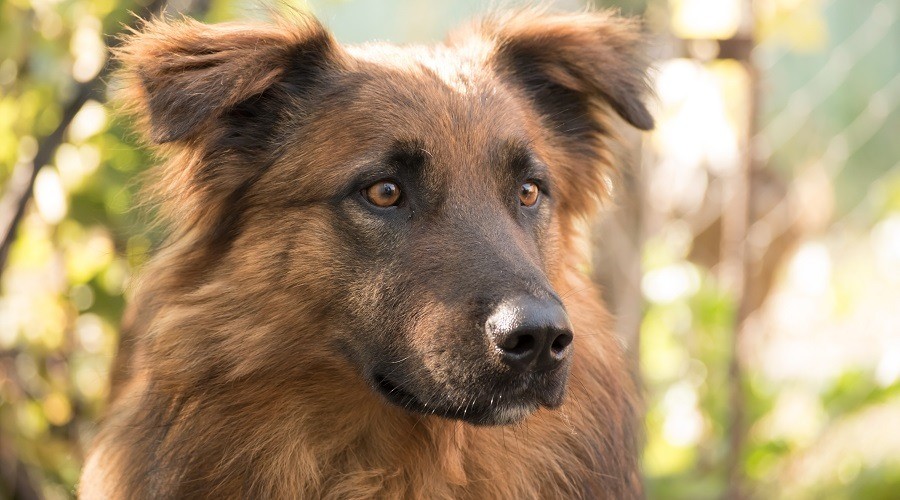
The Irish Setter German Shepherd mix, also known as the Irish Shepherd, represents a unique hybrid combining two distinguished working breeds. This designer cross merges the German Shepherd's intelligence and protective instincts with the Irish Setter's grace and hunting prowess. Standing 22-26 inches tall and weighing 65-90 pounds, these dogs exhibit high energy levels, remarkable trainability, and strong family bonds. While not a common mix, they are gaining recognition for their versatile abilities and striking appearance, typically displaying a coat that blends the rich reds of the Irish Setter with the classic black and tan of the German Shepherd.
Training & Exercise Requirements
Advanced Training Capabilities
The German Shepherd Irish Setter mix has exceptional training capabilities that extend beyond basic obedience. These dogs excel in specialized activities like tracking, search and rescue, and competitive agility trials due to their combined intelligence and athleticism. Their strong work ethic from the German Shepherd parent coupled with the Irish Setter's eagerness to please makes them highly trainable for complex tasks. However, they require an experienced handler who can provide firm but positive reinforcement-based training methods.
Exercise Intensity Needs
While basic exercise requirements have been covered previously, the specific intensity needs of this mix deserve special attention. These dogs require vigorous exercise sessions that challenge both physical stamina and mental capabilities. Activities should include:
- High-intensity interval training through fetch or agility courses
- Endurance activities like long-distance running or swimming
- Scent work exercises that engage their hunting instincts
- Interactive play sessions lasting 30-45 minutes, 2-3 times daily
The exercise regimen should be carefully structured to prevent overexertion while meeting their substantial energy demands. Without proper intensive exercise, these dogs may develop destructive behaviors or anxiety due to pent-up energy. Their exercise needs typically peak between 1-3 years of age before gradually moderating in senior years.
Breed Overview & Physical Characteristics
Size & Appearance Standards
The German Shepherd Irish Setter mix is a large-sized dog typically standing 22-26 inches tall and weighing between 60-90 pounds. Their coat combines characteristics from both parent breeds, featuring medium to long dense fur that may be slightly wavy. Common coat colors include black and tan, sable, red, black, mahogany, and chestnut shades. The breed displays a distinctive appearance with the German Shepherd's strong, muscular build complemented by the Irish Setter's elegant features.
Temperament & Training Aptitude
The personality traits of this mix reflect both parent breeds' characteristics. They demonstrate high intelligence with strong protective instincts from the German Shepherd side while inheriting the Irish Setter's playful and friendly nature. Key temperament traits include:
- Protective yet gentle disposition
- Strong pack mentality and loyalty to family
- High social intelligence requiring early socialization
- Natural guarding instincts balanced with friendliness
- Moderate to high prey drive requiring management
Their trainability stems from both breeds' working backgrounds, though individual dogs may lean more toward either parent's traits. Training should focus on channeling their natural instincts through:
- Early socialization with people and animals
- Consistent boundary setting
- Positive reinforcement methods
- Mental stimulation activities
- Leadership establishment
This mix requires an experienced owner who can provide firm but gentle guidance while understanding the unique blend of protective and sporting dog traits.
Health & Genetic Considerations
Common Health Vulnerabilities
The German Shepherd Irish Setter mix faces several breed-specific health challenges that require proactive monitoring. While previous sections covered basic health needs, this section focuses on genetic predispositions unique to this mix:
- Degenerative spinal stenosis - More prevalent in this mix due to the German Shepherd genetics
- Progressive retinal atrophy - Inherited from Irish Setter lineage
- Osteosarcoma - Higher risk compared to other mixed breeds
- Heart disease - Requires regular cardiac screening
Preventive Care Requirements
Beyond routine veterinary care, this mix needs specialized preventive measures to maintain optimal health:
- Joint supplements starting at 1 year of age to prevent dysplasia
- Regular eye examinations every 6-12 months
- Cardiac evaluations beginning at age 2
- Specialized diet with:
- High-quality protein (25-30%)
- Glucosamine and chondroitin
- Omega-3 fatty acids
- Joint-supporting nutrients
The mix requires careful monitoring during growth phases (6-18 months) when rapid development can strain joints and bones. owners should work closely with veterinarians to develop customized preventive care plans addressing their specific genetic risks.
Conclusion
The German Shepherd Irish Setter mix emerges as a remarkable hybrid combining the best qualities of both parent breeds, though requiring dedicated and experienced ownership. This large-sized dog (22-26 inches tall, 60-90 pounds) demonstrates exceptional intelligence, trainability, and athletic ability while possessing a balanced temperament that blends the German Shepherd's protective nature with the Irish Setter's friendly disposition. However, they have intensive exercise requirements including vigorous daily activity and mental stimulation to prevent behavioral issues.
The breed's significant training capabilities and working potential are counterbalanced by several important health considerations, including predispositions to spinal, eye, and joint issues that require proactive monitoring and preventive care. Prospective owners should be prepared for the substantial commitment in terms of exercise, training, and healthcare management. Success with this mix depends on providing firm but positive leadership, consistent physical activity, early socialization, and comprehensive preventive veterinary care throughout their lifespan. These factors make them best suited for active, experienced dog owners who can fully commit to meeting their considerable physical and mental stimulation needs.